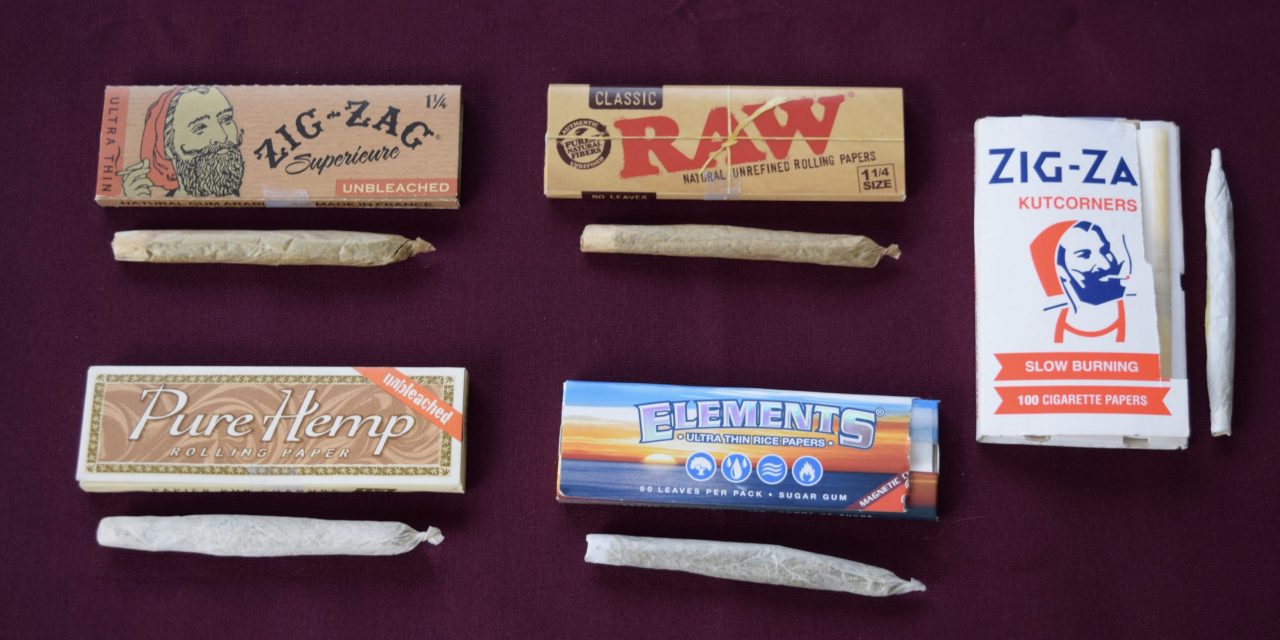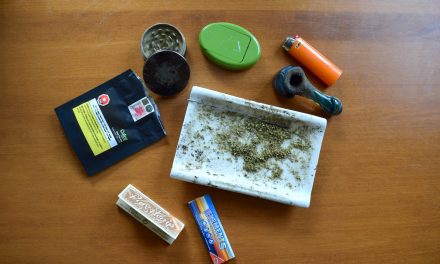By Justin Allec
Last winter I investigated what pre-rolled joints were available through the Ontario Cannabis Store. I had found OCS cannabis to be incredibly dry and difficult to roll with, so I was hoping pre-rolleds would be my solution. However, even with the added convenience, I was disappointed with my findings. Things change, though. Some OCS brands have started offering fresher (or better cured) cannabis, so I was delighted to get back to rolling my own. Having a variety of strains, though, made me wonder if using different rolling papers would change my smoking experience.
I learned how to roll on Zig-Zag Blues. The attraction of Zig-Zags is that they’re cheap and available everywhere. The cut-corners make your rolling easier, the glue is dependable, and the thick paper resists tearing. Eventually I switched to the Whites, which is a lighter paper but still offers the same features… and drawbacks. Even if I disregarded the taste and the chunks of ash floating around, Zig-Zags use a mixture of wood pulp and flax that’s bleached. The bleaching process introduces chemicals like chlorine and calcium carbonate (read: bad stuff) to change the colour of the paper and increase its tensile strength. Needless to say this is an environmentally harmful practice, and really does your body no benefits either.
We are not suffering from a lack of alternatives; just check your local head shop. If 60+ styles of rolling paper sound intimidating, just ask for help, and know that not everything is going to be appealing. Personally, I disregarded the flavoured papers, clear cellulose papers, the 24-karat-gold papers, and anything bigger than a regular joint size (1-1/4”). That left me with a few reputable alternatives: an unbleached Zig-Zag for comparison, a rice paper (Elements), a hemp paper (Pure Hemp), and an unbleached plant fibre paper (Raw).
Going ahead with my, um, testing, I was pleasantly surprised by each brand that I tried. I used the same strain for each joint, and in each case, the new paper outperformed the Zig-Zags. Less ash and an almost total absence of taste except for the strain’s flavour were the first things I noticed; the second was that these papers burned slower, which I attributed to the cannabis drawing the ember, rather than the paper. My rolling technique needed to adapt to each paper’s idiosyncrasies, but after a few tries I barely noticed and I’m now leaning towards the Pure Hemp papers.
An important factor to remember is that the papers you buy from a head shop will be designed for smoking cannabis and offer a better experience than a paper that originated with tobacco. You can say it’s splitting hairs to worry about the paper quality and disregard the fact that I’m smoking something, but hey—joint rule. Find a paper for yourself that works and you can say the same thing.
Hey, Whachugotdare?
Pinner: Because it’s the size of a pin, silly. The small personal joint. A.k.a. a nail.
Joint: Rolled using one paper. A.k.a. J, doobie (or just doob), reefer, jazz cigarette, Thai stick, twizzler, twist, puff, smoke.
Fatty: Because it’s a fat joint, dude. Rolled using oversized papers or gluing a few together. A.k.a. a chonger, a bomber, a Bob Marley, a bat.
Cone: Referring to the shape. The majority of pre-rolled joints are cones, and you can buy empty cones for loading as well.
Spliff: Combination of loose tobacco and cannabis rolled in a regular rolling paper.
Blunt: Cannabis inside, cigar paper outer. Usually closer to a cigarillo in size.
Twax: Verb; coating your rolling paper in cannabis oil or other concentrate before using them.
Cross Joint: Adding joints to another joint to build…something. Be it crucifix, windmill, diamond, or French braid, it usually means some kind of rolling mastery and having too much cannabis around.
Filter: The end part of the joint that adds structure and a convenient holding place. Usually a piece of a business card or the rolling paper packaging. A.k.a. a crutch.
Roach: The itty-bitty burnt end of a roach. Stinks something awful.














